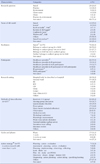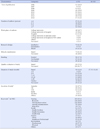1. Lee YS, Kim YC, Lee HG, Kim YM, Cho DJ, Cho JS. Action research. Seoul: Hakjisa;2005. p. 21–42.
2. Soh KL, Davidson P, Leslie G, Rahman ABA. Action research studies in the intensive care setting: A systematic review. Int J Nurs Stud. 2011; 48(2):258–268. DOI:
10.1016/j.ijnurstu.2010.09.014.
3. Williamson GR, Bellman L, Webster J. Action research in nursing and healthcare. 1st ed. In : Jang KS, Kim HY, Kim EA, Kim YM, Moon JE, Park H, editors. translators. Seoul: Hyunmoonsa.
4. Koshy E, Koshy V, Waterman H. Action research in healthcare. New Delhi: Sage;2011.
5. Kim MO. Utilities and application of action research in Korean Social Welfare Research. Korean J Soc Welf. 2009; 61(3):179–204.
6. Heyns T. A journey towards emancipatory practice development [dissertation]. South Africa: University of South Africa;2008.
7. Zuber-Skerritt O, Fletcher M. The quality of an action research thesis in the social sciences. Qual Assur Educ. 2007; 15(4):413–436. DOI:
10.1108/09684880710829983.
8. Munn-Giddings C, McVicar A, Smith L. Systematic review of the uptake and design of action research in published nursing research, 2000-2005. J Res Nurs. 2008; 13(6):465–477. DOI:
10.1177/1744987108090297.
9. Kim YM, Jang KS. An action research study on the effects of an action learning-based nursing professionalism course for nursing students. J Korean Educ. 2014; 41(4):123–147.
10. Kim H, Kim YH. An action research to improve fundamental nursing practice course - Designing college courses model. J Korean Acad Fundam Nurs. 2015; 22(2):169–179. DOI:
10.7739/jkafn.2015.22.2.169.
11. Jang KS, Kim HY, Kim EA, Kim YM, Moon JE, Park H, et al. A journey to action research in clinical nursing context. J Korean Acad Nurs Adm. 2013; 19(1):95–107. DOI:
10.11111/jkana.2013.19.1.95.
12. Kim B. Action research for parent empowerment of married immigrant women. J Korean Acad Psychiatr Ment Health Nurs. 2013; 22(1):65–76. DOI:
10.12934/jkpmhn.2013.22.1.65.
13. Choe MA, Bang KS, Kim NC, Kim SJ, Kim YS, Kim HS, et al. Nursing Research Trends Analysis Using 2011 East Asian Forum of Nursing Scholars (EAFONS) Abstract. J Korean Acad Soc Nurs Edu. 2012; 18(2):332–342. DOI:
10.5977/jkasne.2012.18.2.332.
14. Kim HS. Conceptual domains in nursing: A framework for theoretical analysis. In : Kim HS, editor. The nature of theoretical thinking in nursing. 3rd ed. New York, NY: Springer Pub. Co.;2010. p. 59–84.
15. Krugman M, Heggem L, Kinney LJ, Frueh M. Longitudinal charge nurse leadership development and evaluation. J Nurs Adm. 2013; 43(9):438–446. DOI:
10.1097/NNA.0b013e3182a23b26.
16. Havens DS, Wood SO, Leeman J. Improving nursing practice and patient care: Building capacity with appreciative inquiry. J Nurs Adm. 2006; 36(10):463–470.
17. Kang JY, So KH. Education action research in Korea. Asian J Educ. 2011; 12(3):197–224.
18. Waterman H, Tillen D, Dickson R, De Koning K. Action research: A systematic review and guidance for assessment. Health Technol Assess. 2001; 5(23):iii–157. DOI:
10.3310/hta5230.
20. Coghlan D, Casey M. Action research from the inside: Issues and challenges in doing action research in your own hospital. J Adv Nurs. 2001; 35(5):674–682. DOI:
10.1046/j.1365-2648.2001.01899.x.
21. Rigour and quality. In : Koch T, Kralik D, editors. Participatory action research in health care. Oxford; Malden, MA: Blackwell Pub;2006. p. 137–149.
22. Zuber-Skerritt O. Action research in higher education: Examples and reflections. London: Kogan Page;1992.
23. Waterman H. Embracing ambiguities and valuing ourselves: Issues of validity in action research. J Adv Nurs. 1998; 28(1):101–105.





 PDF
PDF ePub
ePub Citation
Citation Print
Print





 XML Download
XML Download